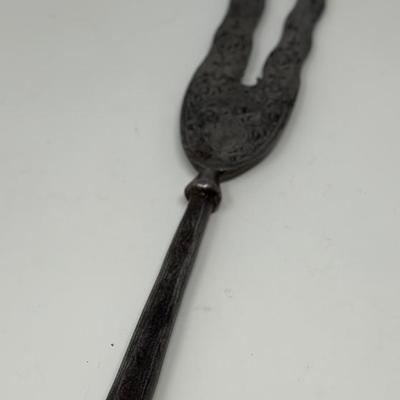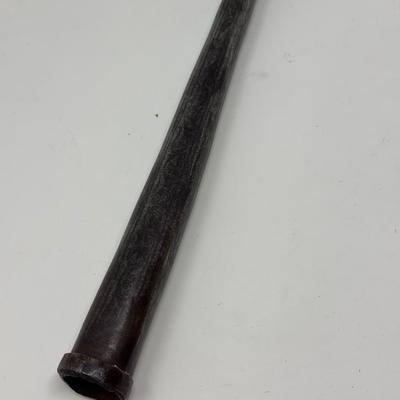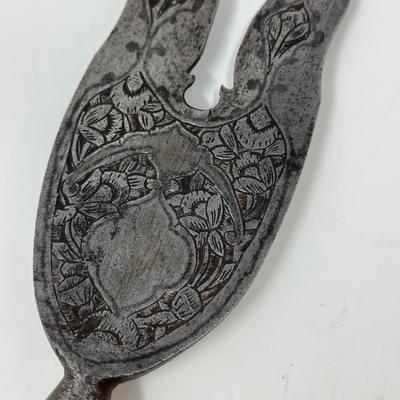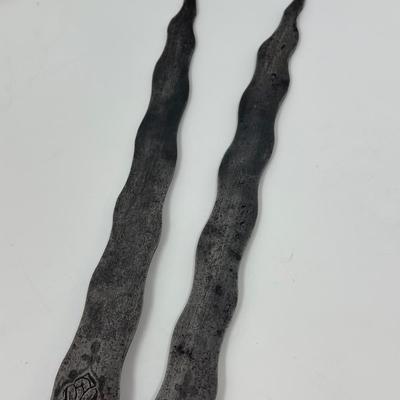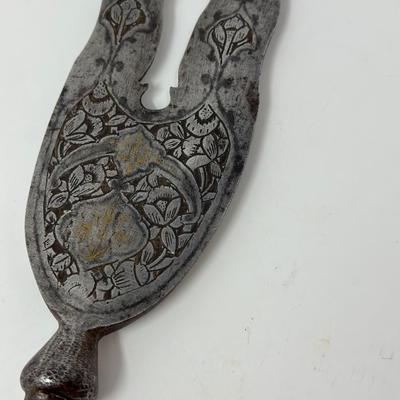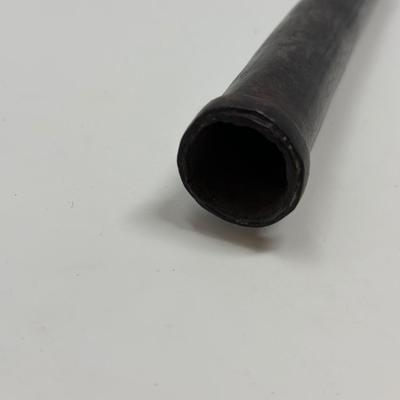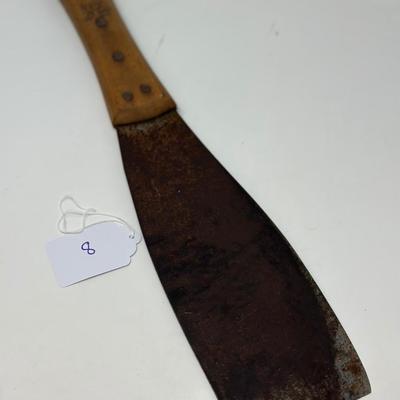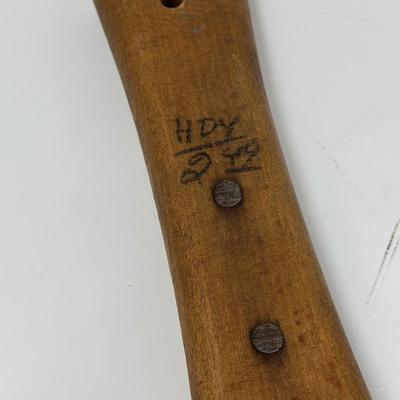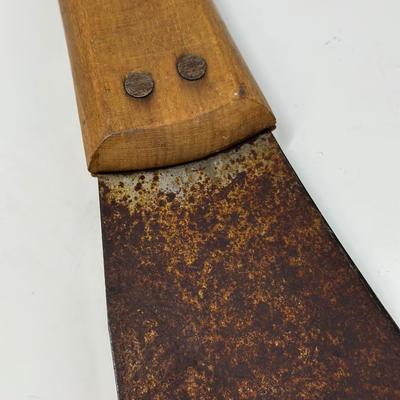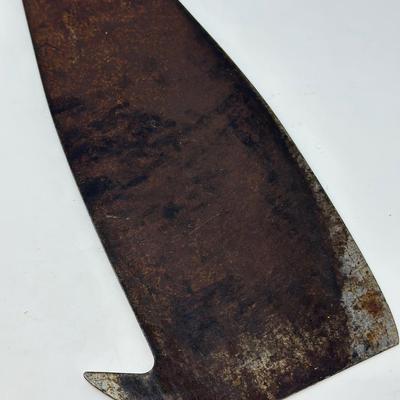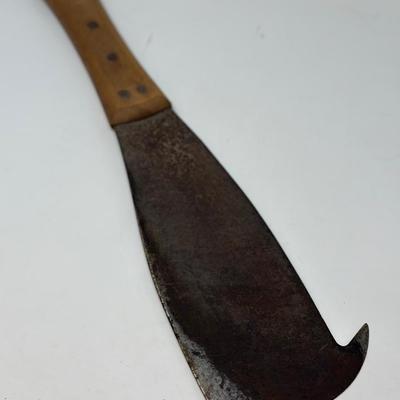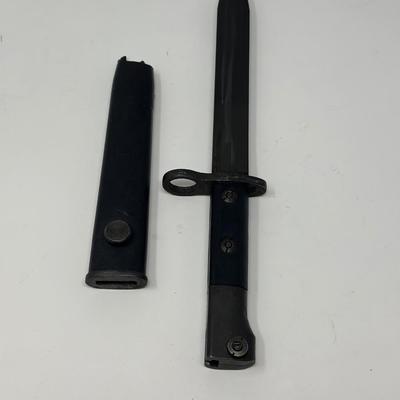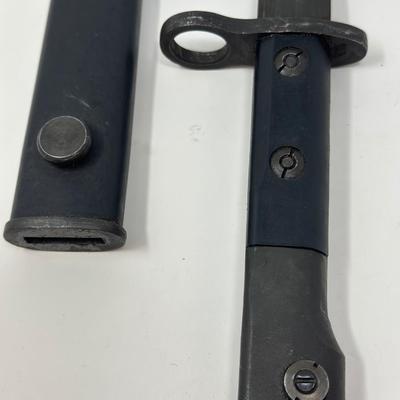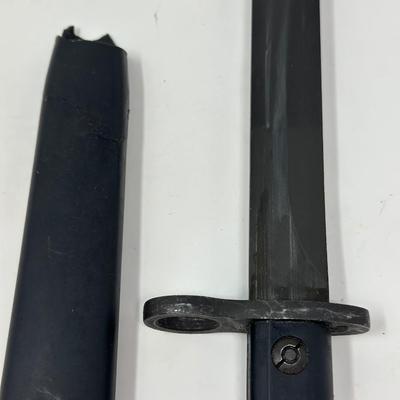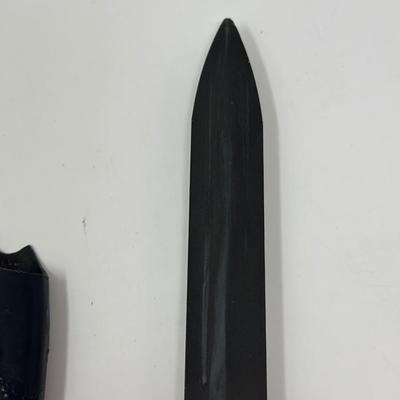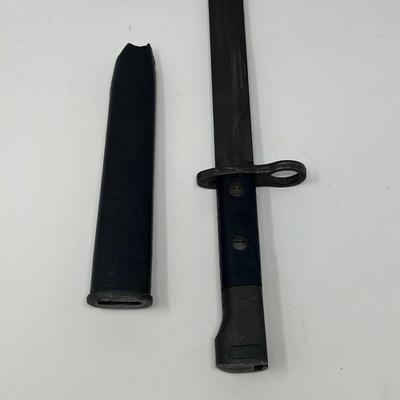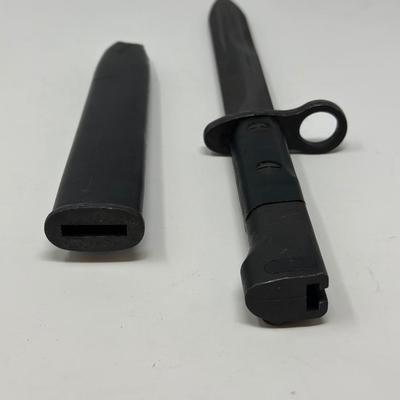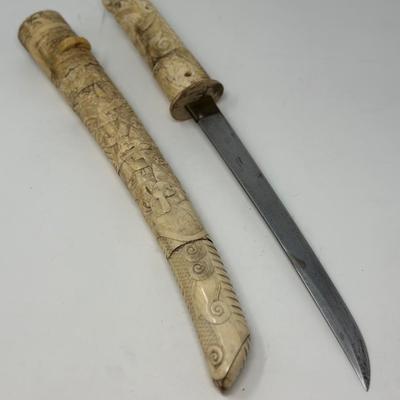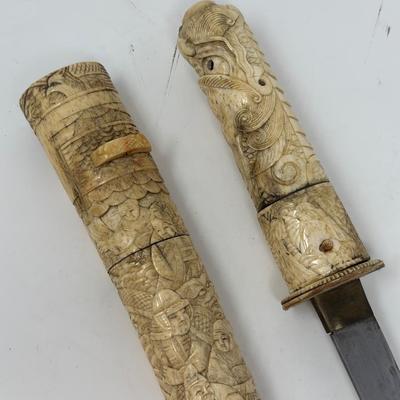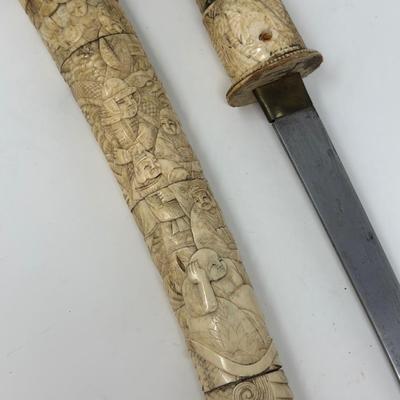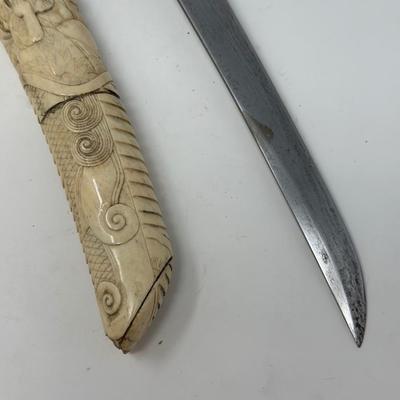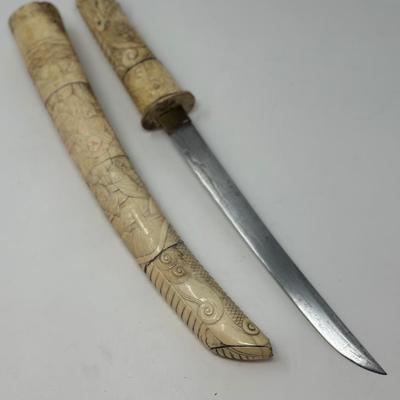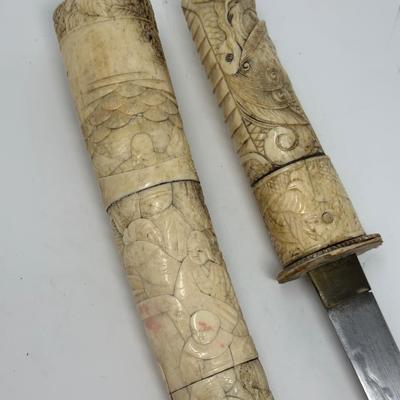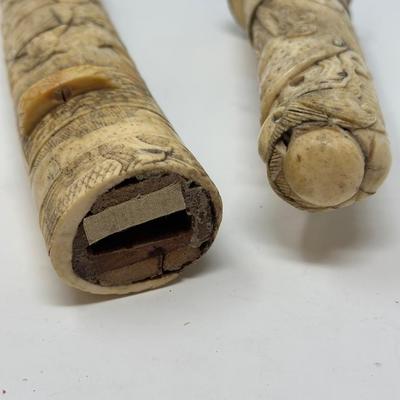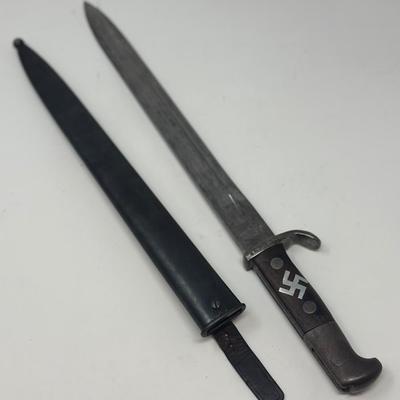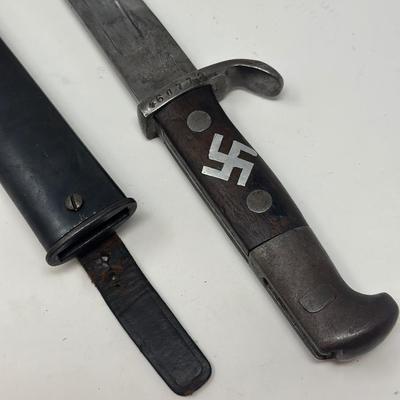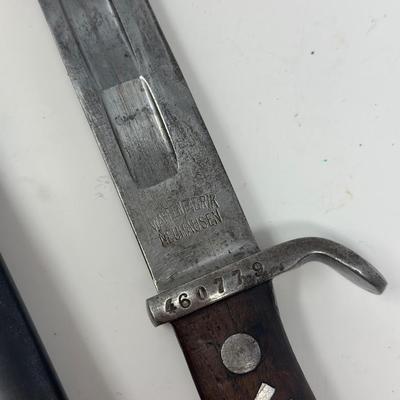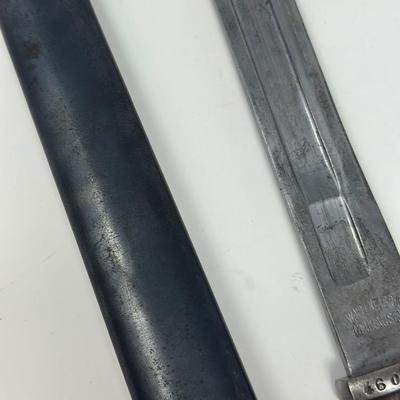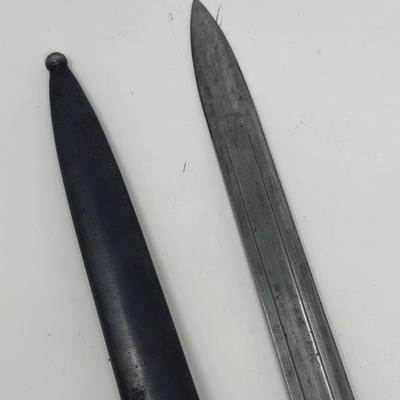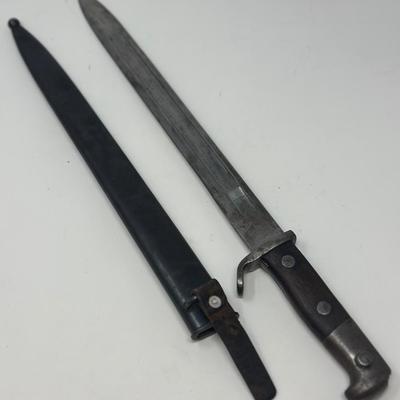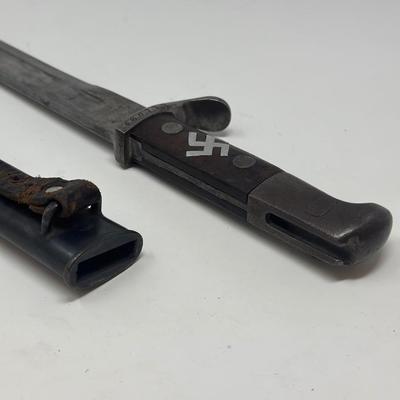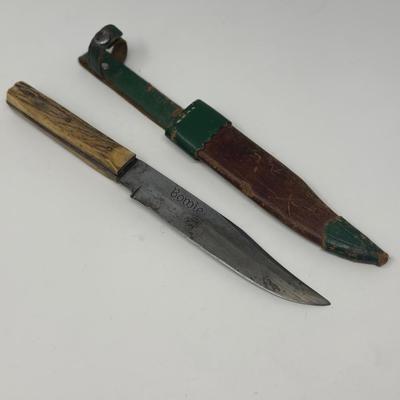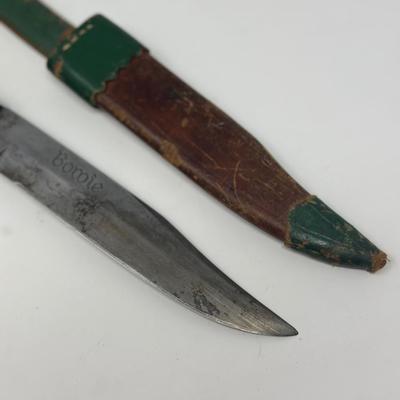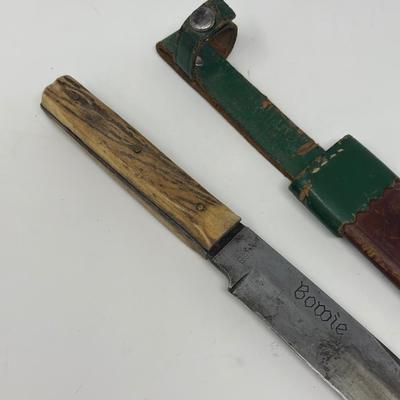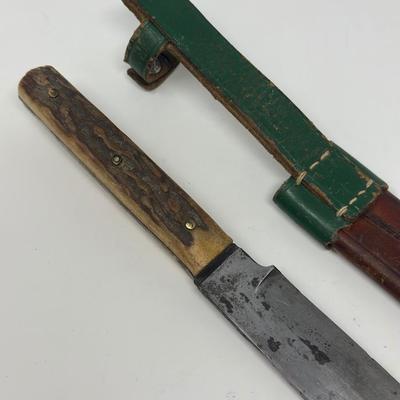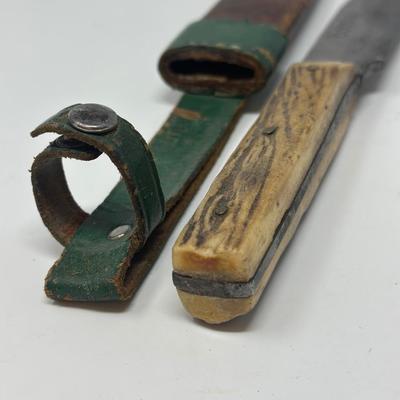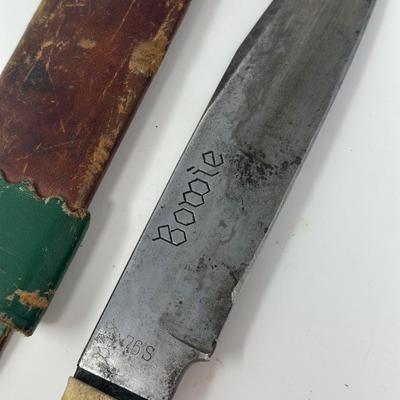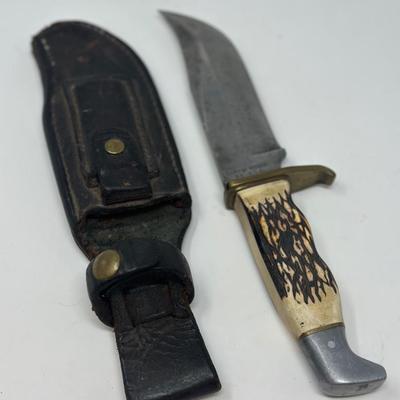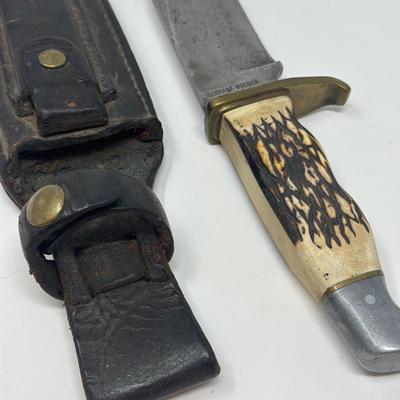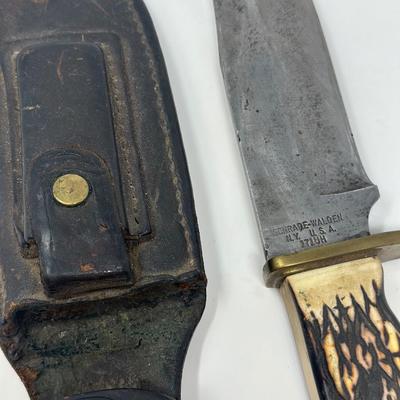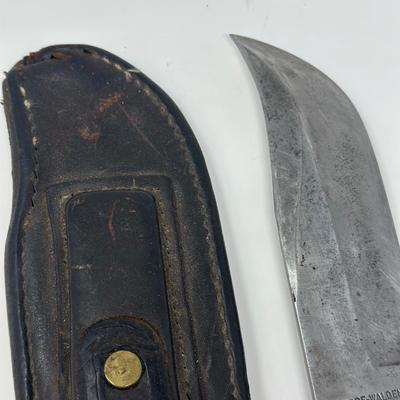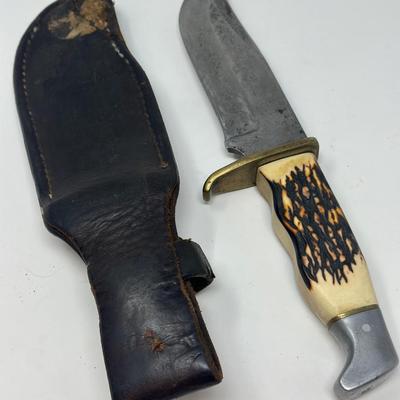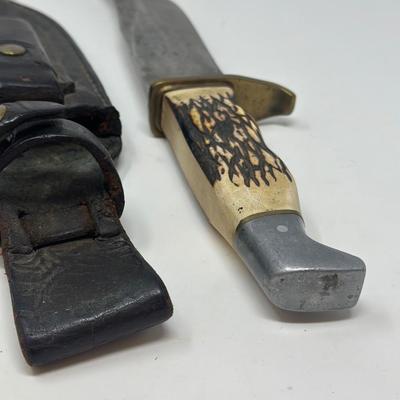-
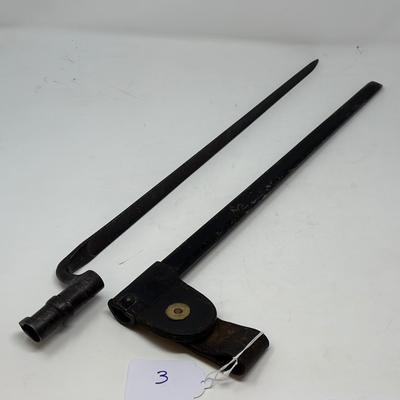
18” blade stamped USA on blade This is a US 45/70 Trapdoor Springfield Bayonet Scabbard with a National Guard Pennsylvania (NGP) brass frog. It was designed for the .45-70 Springfield trapdoor rifle most likely from the Indian Wars era. Likely patented by Mckenney's, this type of scabbard is a rare find because during WWII many surviving Model 1873's were cut up to make trench daggers. 1 / 561 -
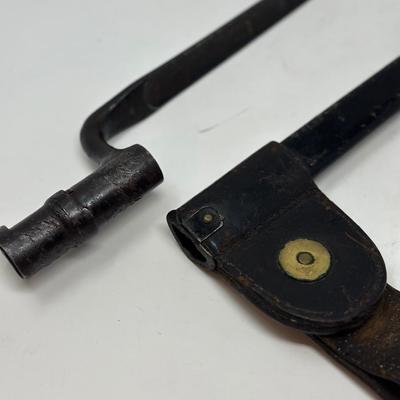
18” blade stamped USA on blade This is a US 45/70 Trapdoor Springfield Bayonet Scabbard with a National Guard Pennsylvania (NGP) brass frog. It was designed for the .45-70 Springfield trapdoor rifle most likely from the Indian Wars era. Likely patented by Mckenney's, this type of scabbard is a rare find because during WWII many surviving Model 1873's were cut up to make trench daggers. 2 / 561 -
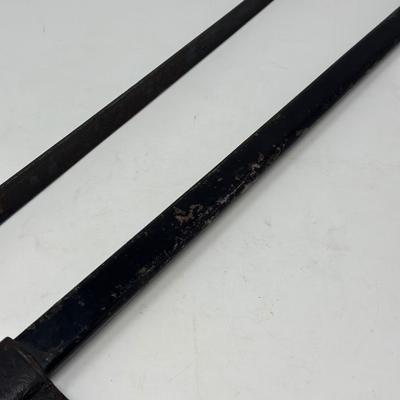
18” blade stamped USA on blade This is a US 45/70 Trapdoor Springfield Bayonet Scabbard with a National Guard Pennsylvania (NGP) brass frog. It was designed for the .45-70 Springfield trapdoor rifle most likely from the Indian Wars era. Likely patented by Mckenney's, this type of scabbard is a rare find because during WWII many surviving Model 1873's were cut up to make trench daggers. 3 / 561 -
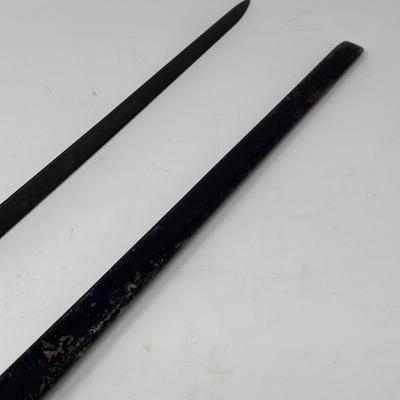
18” blade stamped USA on blade This is a US 45/70 Trapdoor Springfield Bayonet Scabbard with a National Guard Pennsylvania (NGP) brass frog. It was designed for the .45-70 Springfield trapdoor rifle most likely from the Indian Wars era. Likely patented by Mckenney's, this type of scabbard is a rare find because during WWII many surviving Model 1873's were cut up to make trench daggers. 4 / 561 -
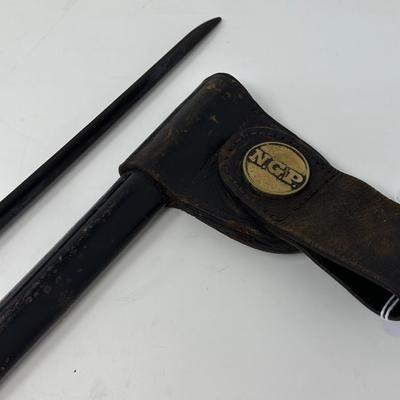
18” blade stamped USA on blade This is a US 45/70 Trapdoor Springfield Bayonet Scabbard with a National Guard Pennsylvania (NGP) brass frog. It was designed for the .45-70 Springfield trapdoor rifle most likely from the Indian Wars era. Likely patented by Mckenney's, this type of scabbard is a rare find because during WWII many surviving Model 1873's were cut up to make trench daggers. 5 / 561 -
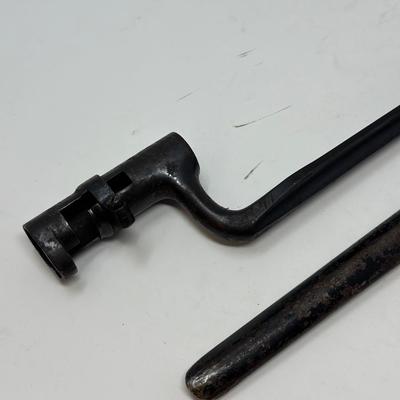
18” blade stamped USA on blade This is a US 45/70 Trapdoor Springfield Bayonet Scabbard with a National Guard Pennsylvania (NGP) brass frog. It was designed for the .45-70 Springfield trapdoor rifle most likely from the Indian Wars era. Likely patented by Mckenney's, this type of scabbard is a rare find because during WWII many surviving Model 1873's were cut up to make trench daggers. 6 / 561 -
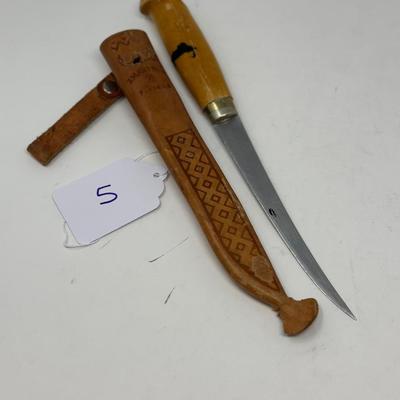
6 1/4” blade leather scabbard 7 / 561 sold -
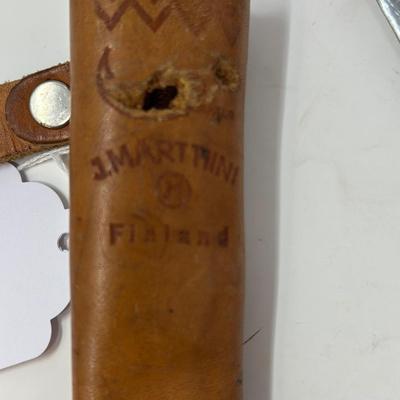
6 1/4” blade leather scabbard 8 / 561 sold -
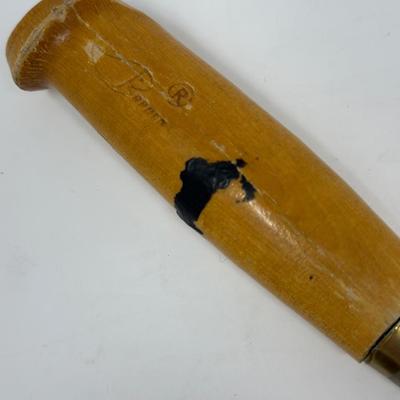
6 1/4” blade leather scabbard 9 / 561 sold -
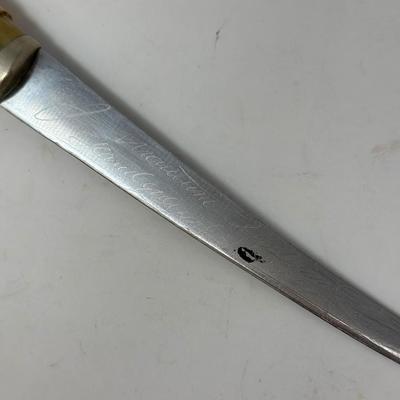
6 1/4” blade leather scabbard 10 / 561 sold -
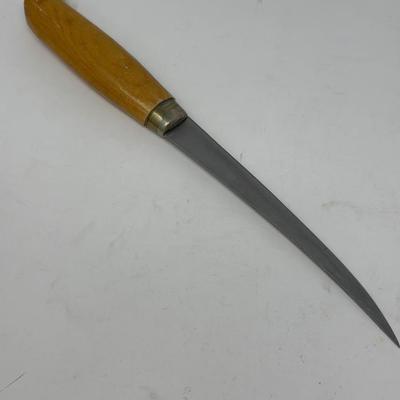
6 1/4” blade leather scabbard 11 / 561 sold -
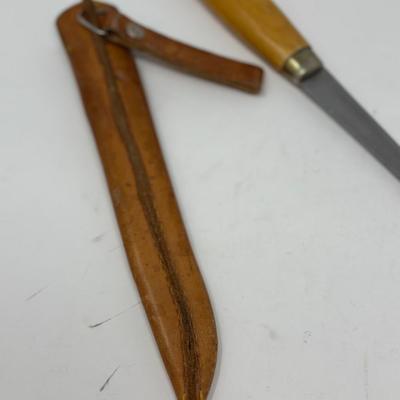
6 1/4” blade leather scabbard 12 / 561 sold -
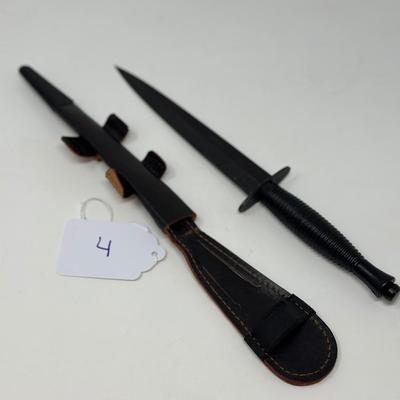
8” blackened high carbon blade with alloy handle and leather scabbard This double-edged, well-balanced dagger was the preferred commando weapon during WWII for both the US and British forces. This is a 3rd Pattern Fairbairn-Sykes fighting knife manufactured in Sheffield England. On the right side of the blade guard is the stamp 'Sheffield England' and on the left side is the stamp 'Nato No 4658827 1976.' 13 / 561 -
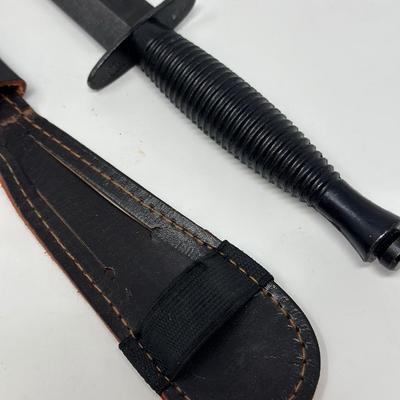
8” blackened high carbon blade with alloy handle and leather scabbard This double-edged, well-balanced dagger was the preferred commando weapon during WWII for both the US and British forces. This is a 3rd Pattern Fairbairn-Sykes fighting knife manufactured in Sheffield England. On the right side of the blade guard is the stamp 'Sheffield England' and on the left side is the stamp 'Nato No 4658827 1976.' 14 / 561 -
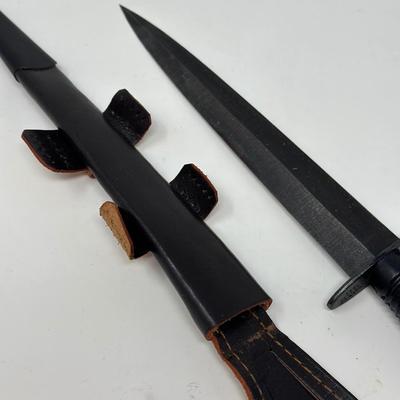
8” blackened high carbon blade with alloy handle and leather scabbard This double-edged, well-balanced dagger was the preferred commando weapon during WWII for both the US and British forces. This is a 3rd Pattern Fairbairn-Sykes fighting knife manufactured in Sheffield England. On the right side of the blade guard is the stamp 'Sheffield England' and on the left side is the stamp 'Nato No 4658827 1976.' 15 / 561 -
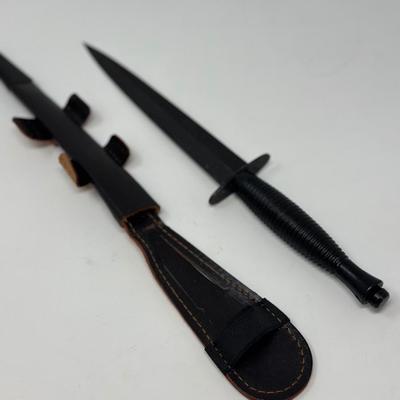
8” blackened high carbon blade with alloy handle and leather scabbard This double-edged, well-balanced dagger was the preferred commando weapon during WWII for both the US and British forces. This is a 3rd Pattern Fairbairn-Sykes fighting knife manufactured in Sheffield England. On the right side of the blade guard is the stamp 'Sheffield England' and on the left side is the stamp 'Nato No 4658827 1976.' 16 / 561 -
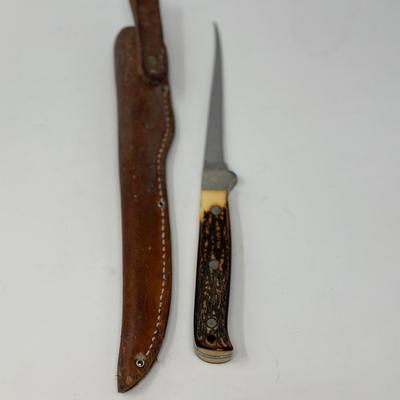
10” Length with 5” fixed blade 17 / 561 -
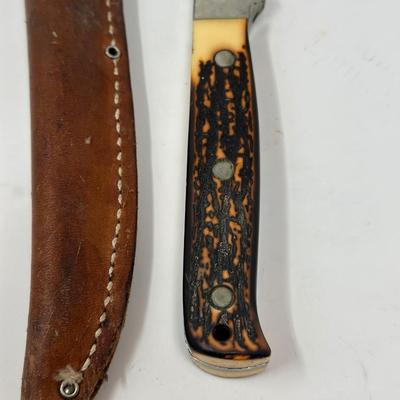
10” Length with 5” fixed blade 18 / 561 -
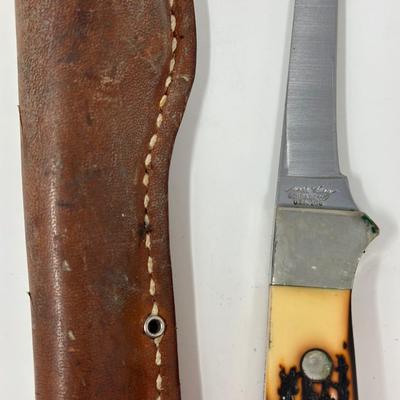
10” Length with 5” fixed blade 19 / 561 -
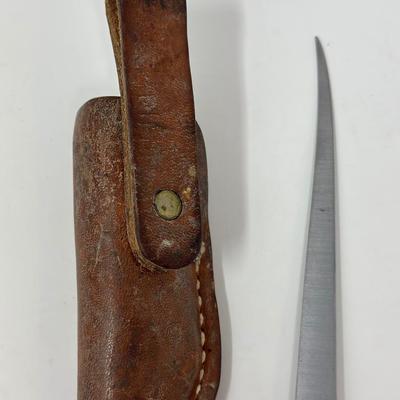
10” Length with 5” fixed blade 20 / 561 -
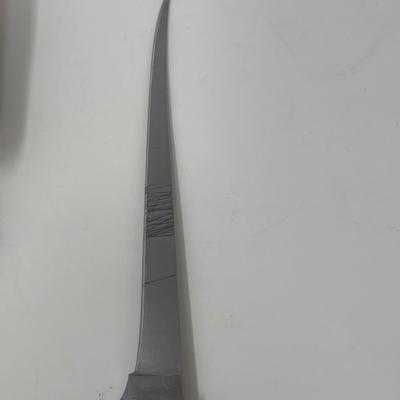
10” Length with 5” fixed blade 21 / 561 -
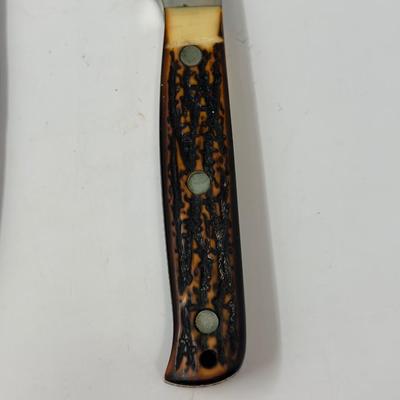
10” Length with 5” fixed blade 22 / 561 -
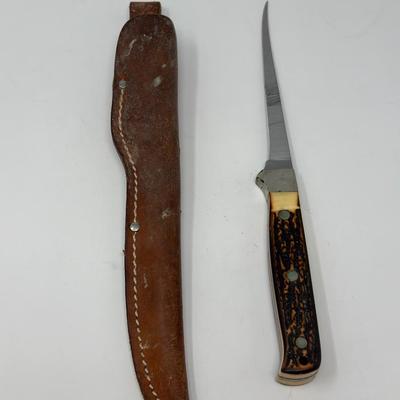
10” Length with 5” fixed blade 23 / 561 -
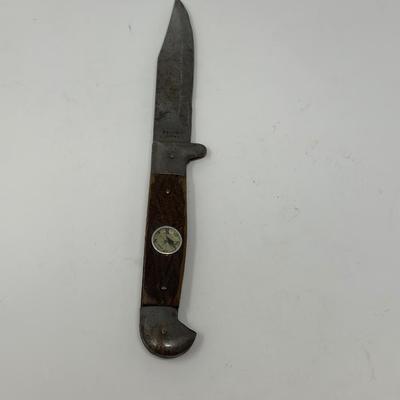
3 1/2” blade, compass does not work 41 / 561 sold -
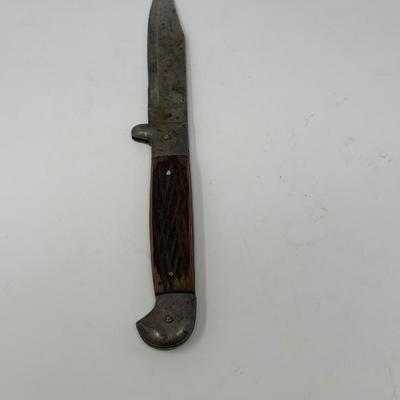
3 1/2” blade, compass does not work 42 / 561 sold -
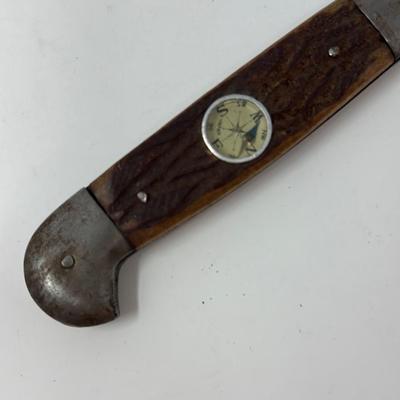
3 1/2” blade, compass does not work 43 / 561 sold -
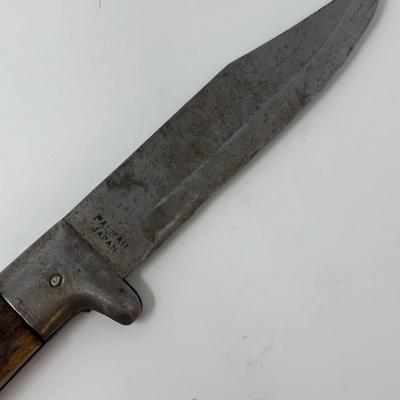
3 1/2” blade, compass does not work 44 / 561 sold -
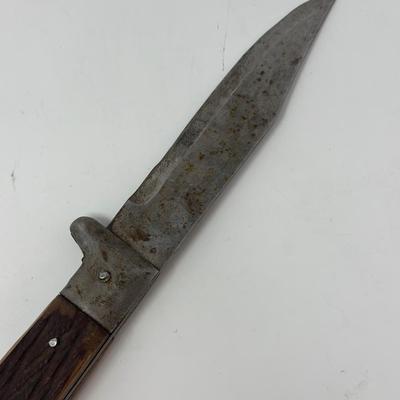
3 1/2” blade, compass does not work 45 / 561 sold -
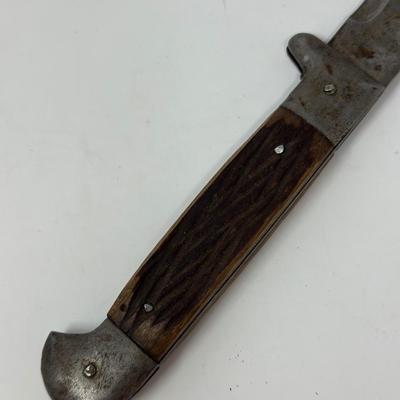
3 1/2” blade, compass does not work 46 / 561 sold -
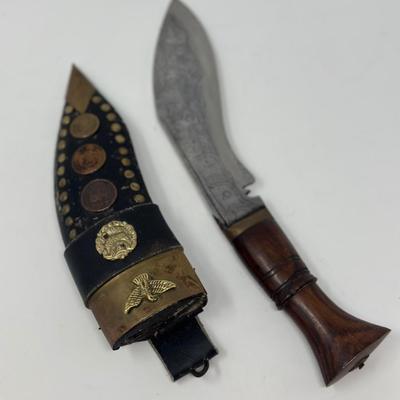
Rare piece in excellent condition. 7” blade and hand carved wood handle The Gurkha Kukri was commonly used as a weapon or in ceremonies. The blade features a cut-out right below the grip. It is said that it resembles Shiva, a cow's foot as a reminder never to use this blade to kill a cow, which are sacred in Hindu culture. This scabbard is made of wood and leather, with brass details and Nepalese coins. It has a traditional blade that is engraved with ornate and decorative patterns. 47 / 561 -
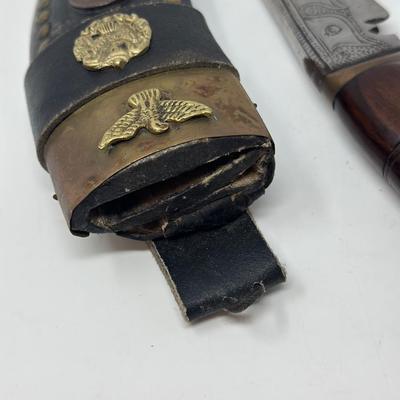
Rare piece in excellent condition. 7” blade and hand carved wood handle The Gurkha Kukri was commonly used as a weapon or in ceremonies. The blade features a cut-out right below the grip. It is said that it resembles Shiva, a cow's foot as a reminder never to use this blade to kill a cow, which are sacred in Hindu culture. This scabbard is made of wood and leather, with brass details and Nepalese coins. It has a traditional blade that is engraved with ornate and decorative patterns. 48 / 561 -
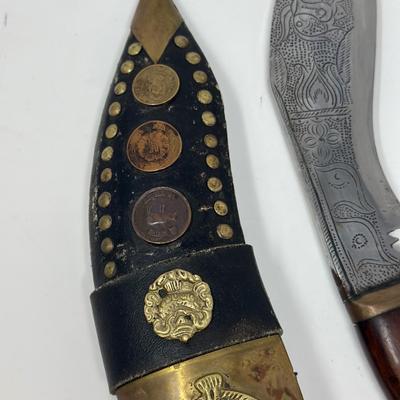
Rare piece in excellent condition. 7” blade and hand carved wood handle The Gurkha Kukri was commonly used as a weapon or in ceremonies. The blade features a cut-out right below the grip. It is said that it resembles Shiva, a cow's foot as a reminder never to use this blade to kill a cow, which are sacred in Hindu culture. This scabbard is made of wood and leather, with brass details and Nepalese coins. It has a traditional blade that is engraved with ornate and decorative patterns. 49 / 561 -
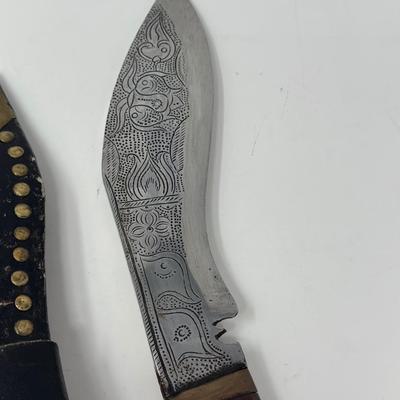
Rare piece in excellent condition. 7” blade and hand carved wood handle The Gurkha Kukri was commonly used as a weapon or in ceremonies. The blade features a cut-out right below the grip. It is said that it resembles Shiva, a cow's foot as a reminder never to use this blade to kill a cow, which are sacred in Hindu culture. This scabbard is made of wood and leather, with brass details and Nepalese coins. It has a traditional blade that is engraved with ornate and decorative patterns. 50 / 561 -
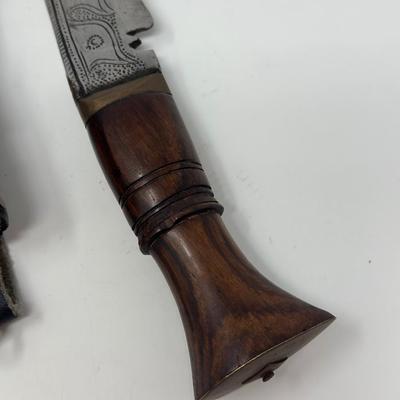
Rare piece in excellent condition. 7” blade and hand carved wood handle The Gurkha Kukri was commonly used as a weapon or in ceremonies. The blade features a cut-out right below the grip. It is said that it resembles Shiva, a cow's foot as a reminder never to use this blade to kill a cow, which are sacred in Hindu culture. This scabbard is made of wood and leather, with brass details and Nepalese coins. It has a traditional blade that is engraved with ornate and decorative patterns. 51 / 561 -
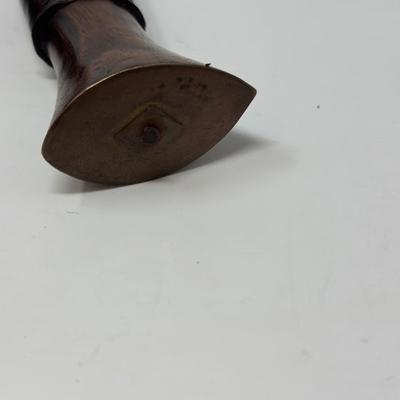
Rare piece in excellent condition. 7” blade and hand carved wood handle The Gurkha Kukri was commonly used as a weapon or in ceremonies. The blade features a cut-out right below the grip. It is said that it resembles Shiva, a cow's foot as a reminder never to use this blade to kill a cow, which are sacred in Hindu culture. This scabbard is made of wood and leather, with brass details and Nepalese coins. It has a traditional blade that is engraved with ornate and decorative patterns. 52 / 561 -
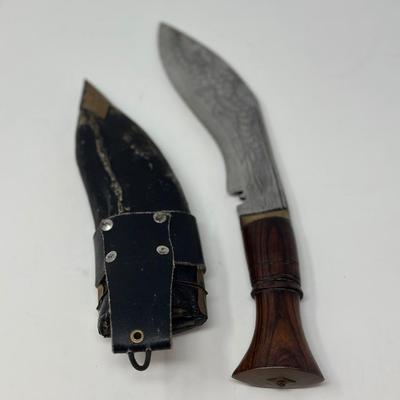
Rare piece in excellent condition. 7” blade and hand carved wood handle The Gurkha Kukri was commonly used as a weapon or in ceremonies. The blade features a cut-out right below the grip. It is said that it resembles Shiva, a cow's foot as a reminder never to use this blade to kill a cow, which are sacred in Hindu culture. This scabbard is made of wood and leather, with brass details and Nepalese coins. It has a traditional blade that is engraved with ornate and decorative patterns. 53 / 561 -
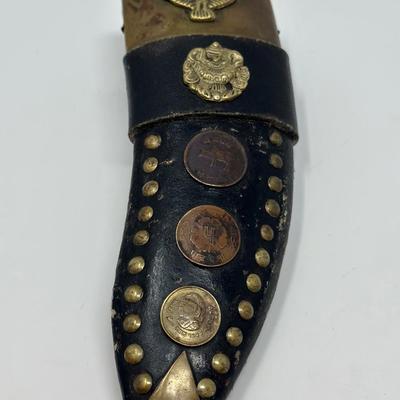
Rare piece in excellent condition. 7” blade and hand carved wood handle The Gurkha Kukri was commonly used as a weapon or in ceremonies. The blade features a cut-out right below the grip. It is said that it resembles Shiva, a cow's foot as a reminder never to use this blade to kill a cow, which are sacred in Hindu culture. This scabbard is made of wood and leather, with brass details and Nepalese coins. It has a traditional blade that is engraved with ornate and decorative patterns. 54 / 561 -
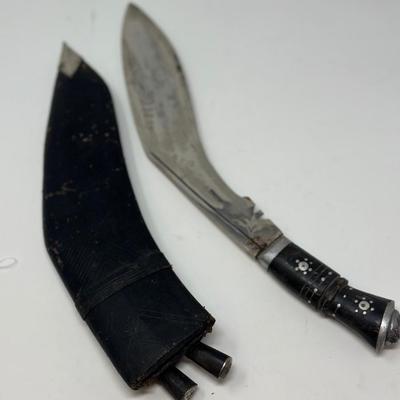
Made in India. The blade is carbon steel and measures 11.06” long by 14.62” overall The Gurkha Kukri was commonly used as a weapon or in ceremonies. The blade features a cut-out right below the grip. It is said that it resembles Shiva, a cow's foot as a reminder never to use this blade to kill a cow, which are sacred in Hindu culture. This scabbard is made of wood and leather, and also features two more compartments for two smaller knives. It has a traditional blade that is engraved with decorative patterns. 55 / 561 -
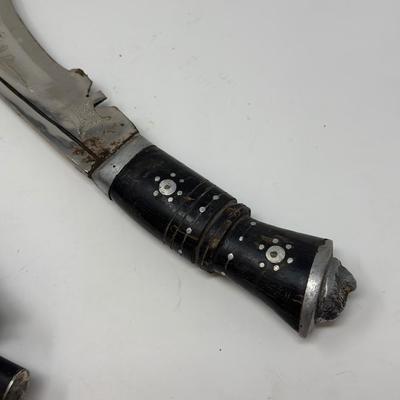
Made in India. The blade is carbon steel and measures 11.06” long by 14.62” overall The Gurkha Kukri was commonly used as a weapon or in ceremonies. The blade features a cut-out right below the grip. It is said that it resembles Shiva, a cow's foot as a reminder never to use this blade to kill a cow, which are sacred in Hindu culture. This scabbard is made of wood and leather, and also features two more compartments for two smaller knives. It has a traditional blade that is engraved with decorative patterns. 56 / 561 -
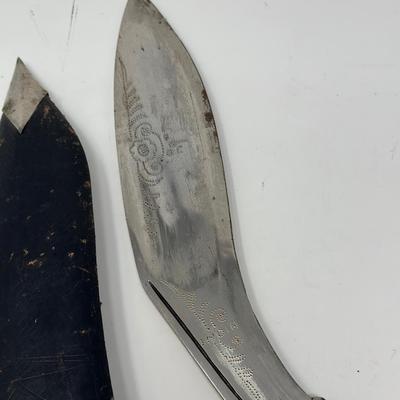
Made in India. The blade is carbon steel and measures 11.06” long by 14.62” overall The Gurkha Kukri was commonly used as a weapon or in ceremonies. The blade features a cut-out right below the grip. It is said that it resembles Shiva, a cow's foot as a reminder never to use this blade to kill a cow, which are sacred in Hindu culture. This scabbard is made of wood and leather, and also features two more compartments for two smaller knives. It has a traditional blade that is engraved with decorative patterns. 57 / 561 -
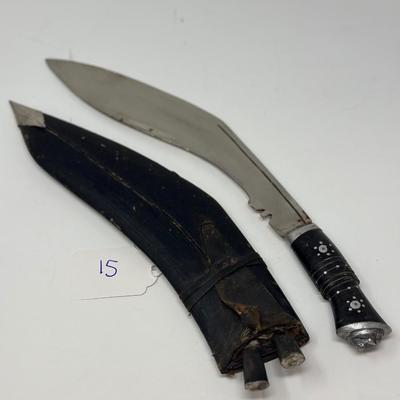
Made in India. The blade is carbon steel and measures 11.06” long by 14.62” overall The Gurkha Kukri was commonly used as a weapon or in ceremonies. The blade features a cut-out right below the grip. It is said that it resembles Shiva, a cow's foot as a reminder never to use this blade to kill a cow, which are sacred in Hindu culture. This scabbard is made of wood and leather, and also features two more compartments for two smaller knives. It has a traditional blade that is engraved with decorative patterns. 58 / 561 -
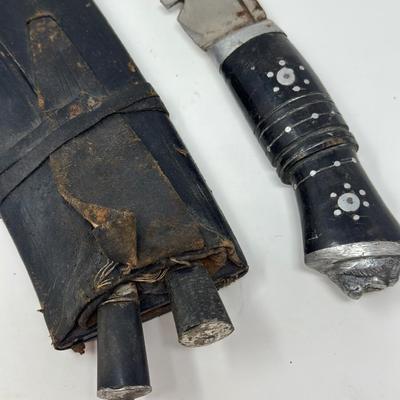
Made in India. The blade is carbon steel and measures 11.06” long by 14.62” overall The Gurkha Kukri was commonly used as a weapon or in ceremonies. The blade features a cut-out right below the grip. It is said that it resembles Shiva, a cow's foot as a reminder never to use this blade to kill a cow, which are sacred in Hindu culture. This scabbard is made of wood and leather, and also features two more compartments for two smaller knives. It has a traditional blade that is engraved with decorative patterns. 59 / 561 -
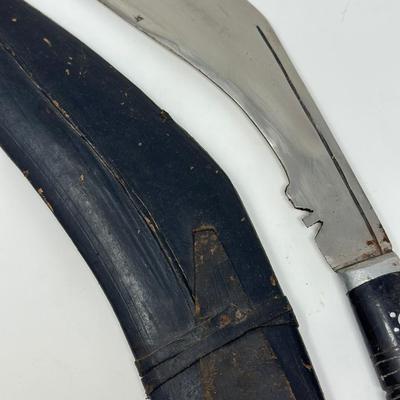
Made in India. The blade is carbon steel and measures 11.06” long by 14.62” overall The Gurkha Kukri was commonly used as a weapon or in ceremonies. The blade features a cut-out right below the grip. It is said that it resembles Shiva, a cow's foot as a reminder never to use this blade to kill a cow, which are sacred in Hindu culture. This scabbard is made of wood and leather, and also features two more compartments for two smaller knives. It has a traditional blade that is engraved with decorative patterns. 60 / 561 -
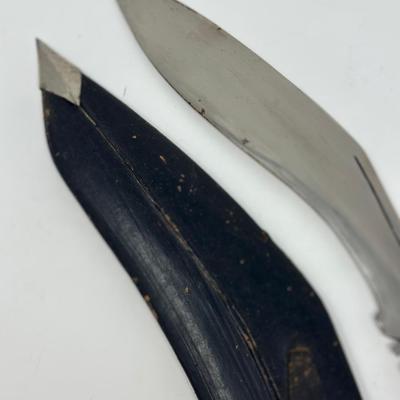
Made in India. The blade is carbon steel and measures 11.06” long by 14.62” overall The Gurkha Kukri was commonly used as a weapon or in ceremonies. The blade features a cut-out right below the grip. It is said that it resembles Shiva, a cow's foot as a reminder never to use this blade to kill a cow, which are sacred in Hindu culture. This scabbard is made of wood and leather, and also features two more compartments for two smaller knives. It has a traditional blade that is engraved with decorative patterns. 61 / 561 -
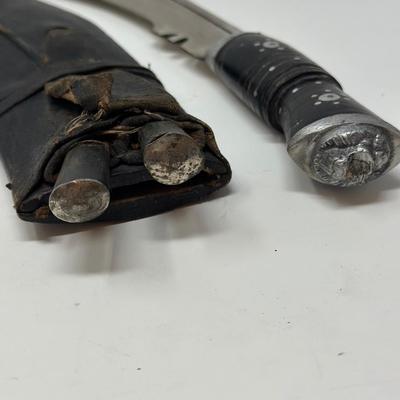
Made in India. The blade is carbon steel and measures 11.06” long by 14.62” overall The Gurkha Kukri was commonly used as a weapon or in ceremonies. The blade features a cut-out right below the grip. It is said that it resembles Shiva, a cow's foot as a reminder never to use this blade to kill a cow, which are sacred in Hindu culture. This scabbard is made of wood and leather, and also features two more compartments for two smaller knives. It has a traditional blade that is engraved with decorative patterns. 62 / 561 -
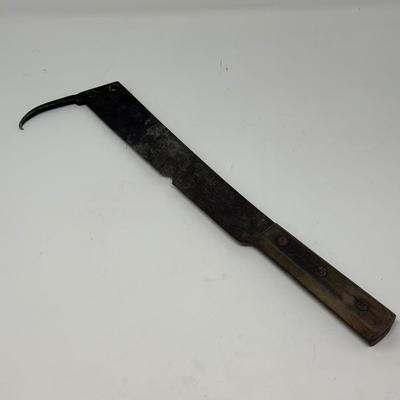
Handmade. Used for harvesting beets. Blade is 10 3/8” 63 / 561 sold -
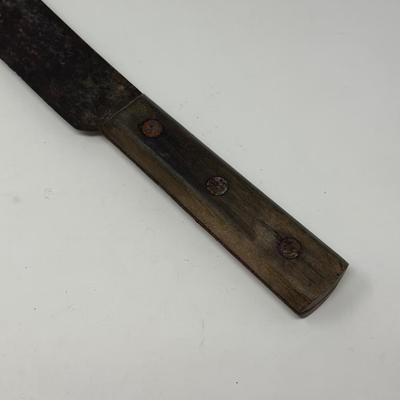
Handmade. Used for harvesting beets. Blade is 10 3/8” 64 / 561 sold -
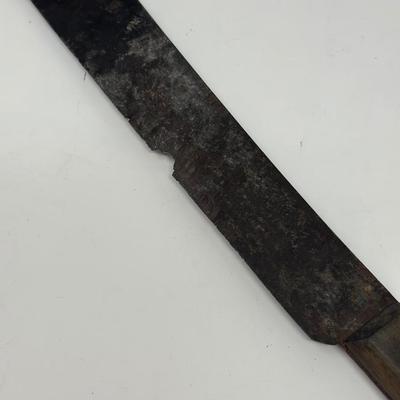
Handmade. Used for harvesting beets. Blade is 10 3/8” 65 / 561 sold -
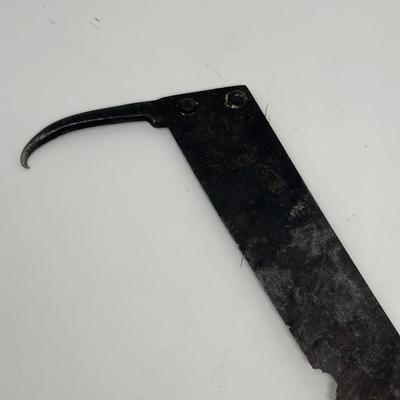
Handmade. Used for harvesting beets. Blade is 10 3/8” 66 / 561 sold -
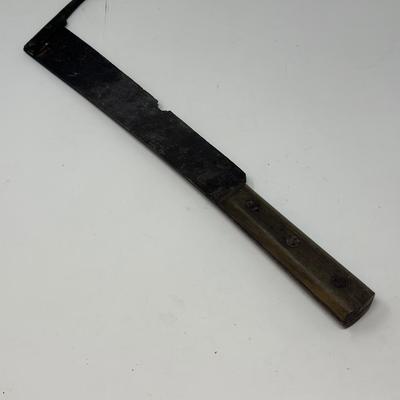
Handmade. Used for harvesting beets. Blade is 10 3/8” 67 / 561 sold -
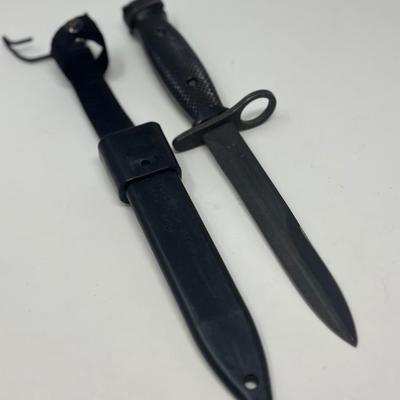
19204 Assy 8448476 MFG 1Z803. 12” long overall 82 / 561 sold -
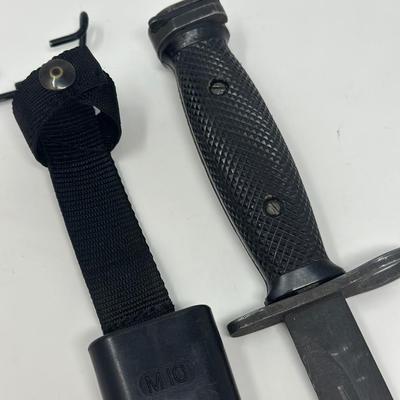
19204 Assy 8448476 MFG 1Z803. 12” long overall 83 / 561 sold -
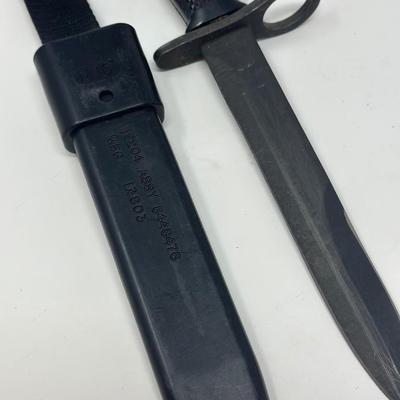
19204 Assy 8448476 MFG 1Z803. 12” long overall 84 / 561 sold -
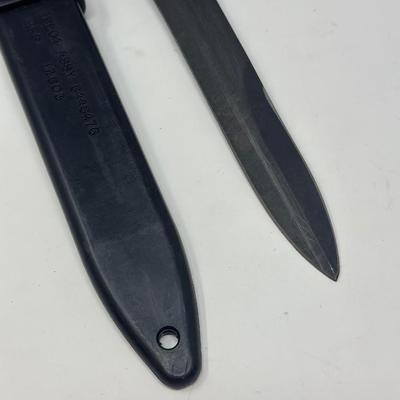
19204 Assy 8448476 MFG 1Z803. 12” long overall 85 / 561 sold -
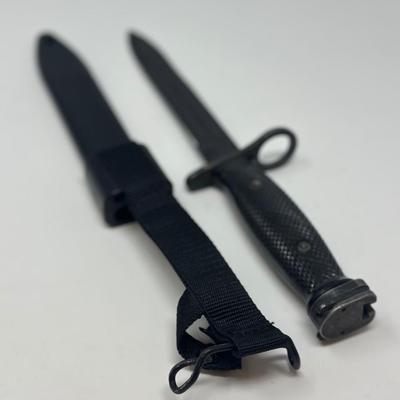
19204 Assy 8448476 MFG 1Z803. 12” long overall 86 / 561 sold -
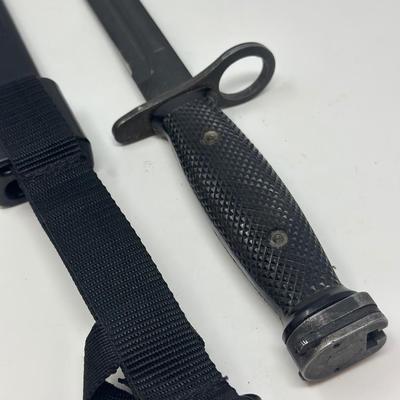
19204 Assy 8448476 MFG 1Z803. 12” long overall 87 / 561 sold -
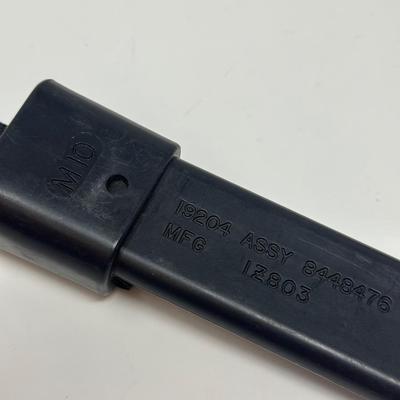
19204 Assy 8448476 MFG 1Z803. 12” long overall 88 / 561 sold
Photos 1 - 100 of 561
Per page:
